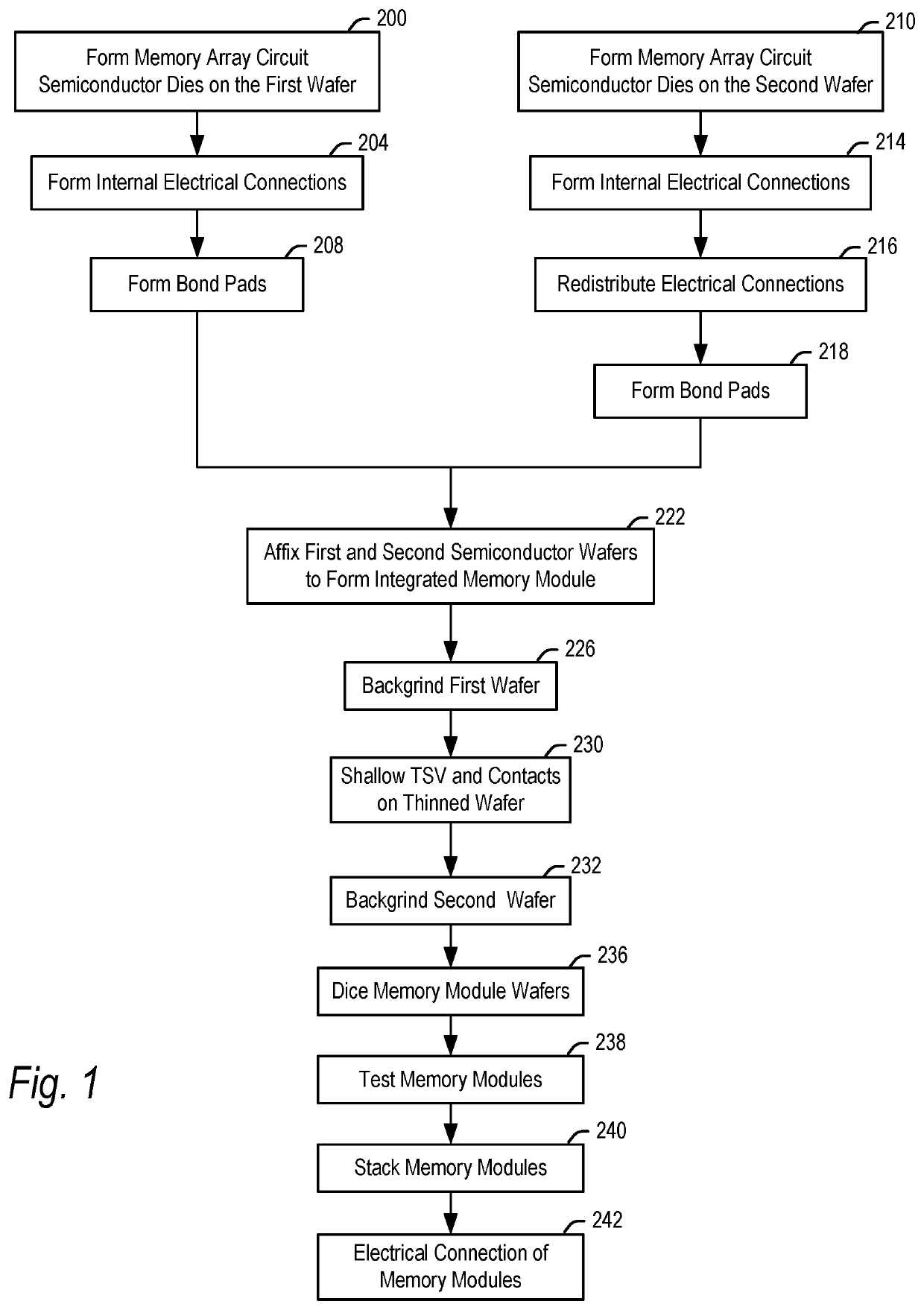Memory scaling semiconductor device
a semiconductor device and memory technology, applied in semiconductor devices, semiconductor/solid-state device details, electrical devices, etc., can solve the problems of die chipping, die warpage, and further reduction of the thickness of semiconductor dies, so as to avoid warpage
- Summary
- Abstract
- Description
- Claims
- Application Information
AI Technical Summary
Benefits of technology
Problems solved by technology
Method used
Image
Examples
Embodiment Construction
[0030]The present technology will now be described with reference to the figures, which in embodiments, relate to a semiconductor device including an integrated memory module. The integrated memory module may include a pair of semiconductor dies, having a device layer formed in a silicon substrate. The pair of dies may be affixed to each other face to face; that is, with their active surfaces facing each other. In such a configuration, the disparate coefficients of thermal expansion of the device layers and silicon substrate balance each other to prevent warping of the module. This ability to prevent warping in part enables a high memory density device where the thicknesses of the respective dies in the module may be thinner than was previously achievable. Additionally, the overall thickness of the module may be sufficient to avoid chipping or cracking during handling of the module during fabrication.
[0031]Economies of scale may be achieved by fabricating a number of memory modules ...
PUM
| Property | Measurement | Unit |
|---|---|---|
| thicknesses | aaaaa | aaaaa |
| thickness | aaaaa | aaaaa |
| thickness | aaaaa | aaaaa |
Abstract
Description
Claims
Application Information
 Login to View More
Login to View More - R&D
- Intellectual Property
- Life Sciences
- Materials
- Tech Scout
- Unparalleled Data Quality
- Higher Quality Content
- 60% Fewer Hallucinations
Browse by: Latest US Patents, China's latest patents, Technical Efficacy Thesaurus, Application Domain, Technology Topic, Popular Technical Reports.
© 2025 PatSnap. All rights reserved.Legal|Privacy policy|Modern Slavery Act Transparency Statement|Sitemap|About US| Contact US: help@patsnap.com



